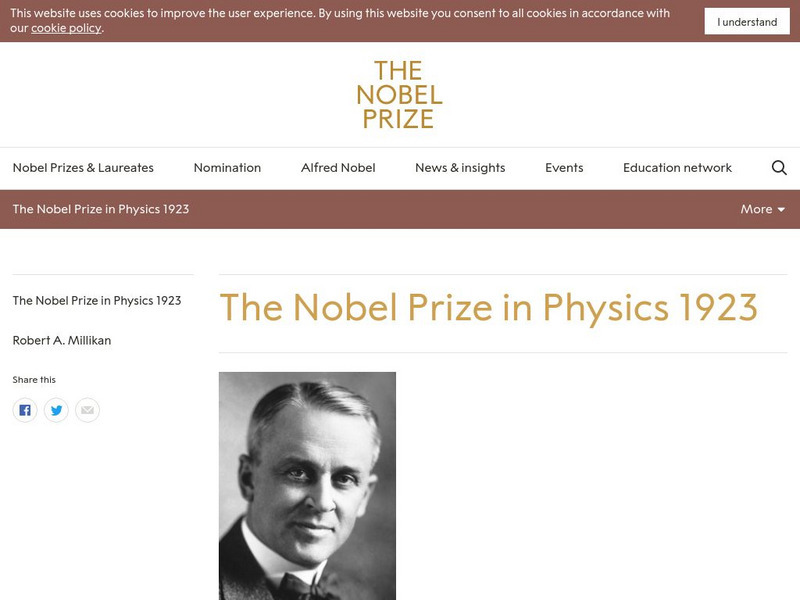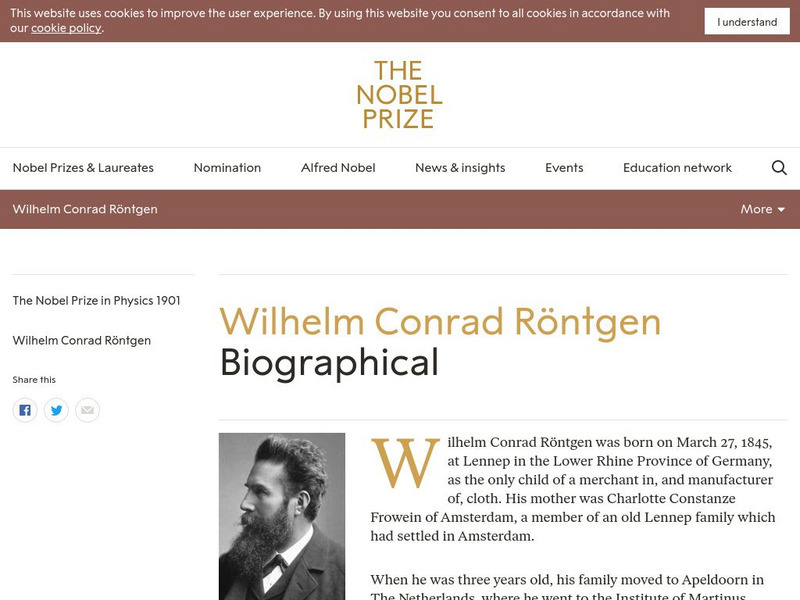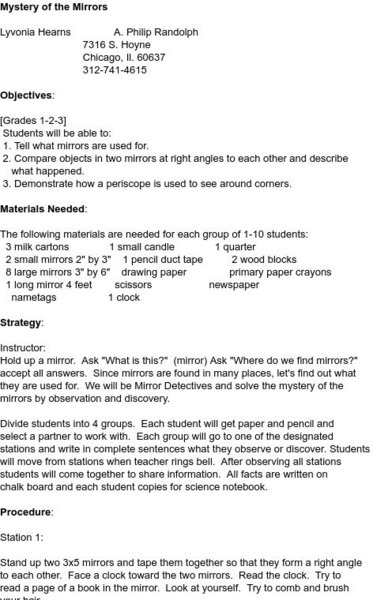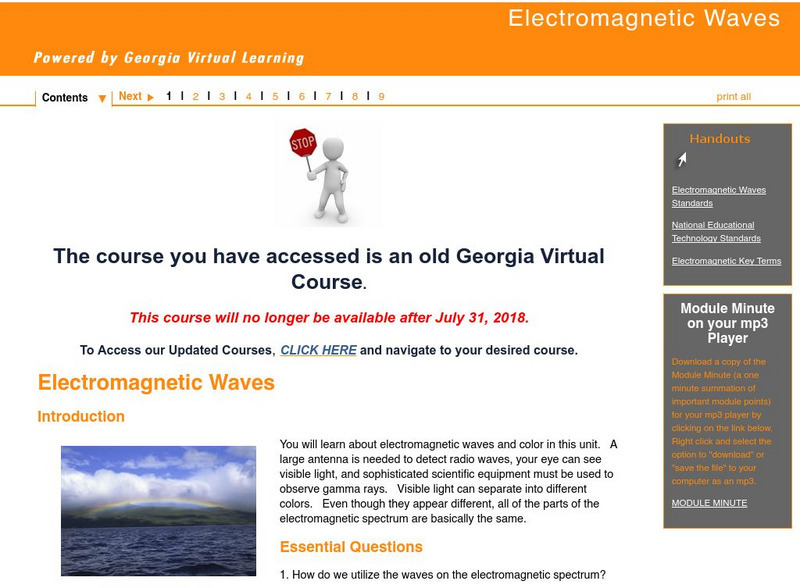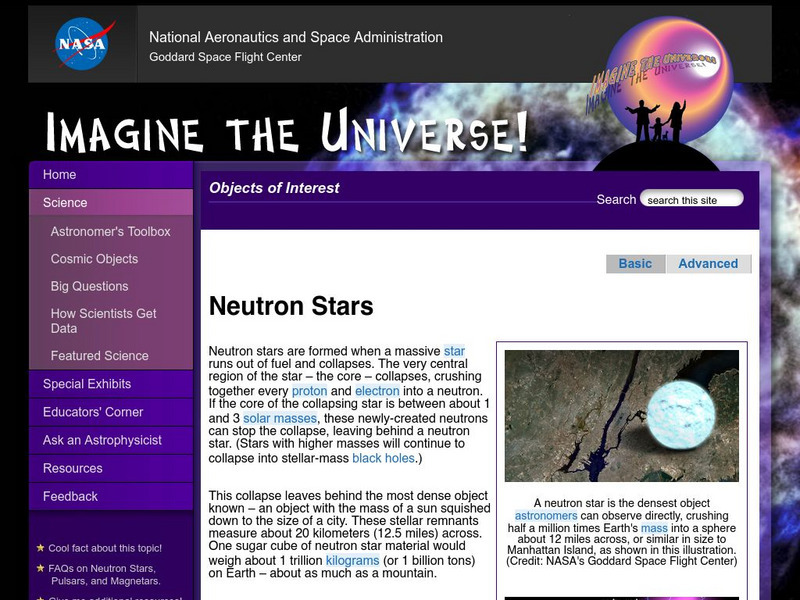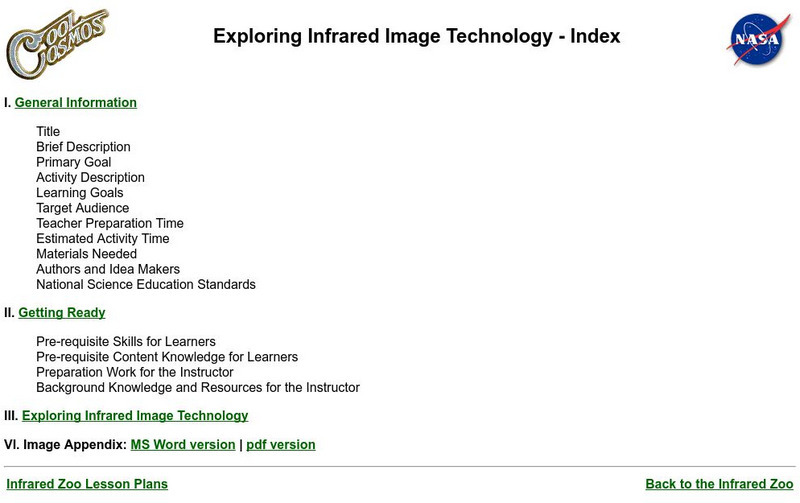Exploratorium
Exploratorium: Science Snacks: Look Into Infinity
In this activity students will create images of images of images that can repeat forever. Students will recreate this effect by setting up two acrylic plastic mirrors.
Nobel Media AB
The Nobel Prize: The Nobel Prize in Physics 1923: Robert Andrews Millikan
This Nobel website on the life and scientific work of Robert A. Millikan includes a biography, images, and internet resources for further reading and research. Also included are the 1923 "Presentation Speech" which praised Millikan's...
Georgia Department of Education
Ga Virtual Learning: Optics
Students discover how mirrors affect optics in this module through reading informational text, watching animations, and answering self-checking practice questions.
Khan Academy
Khan Academy: Thin Lens Sign Conventions
Have you ever wondered why some people need glasses and others don't? It's because of the way light is focused by the lens in your eye. This lens, like magnifying glasses, eyeglasses, and contact lenses, is considered a thin lens.
California Institute of Technology
Ipac: Iras Gallery
This site from IPAC is a series of images of various celestial objects and regions as viewed in infrared light. Each photo is accompanied by a caption.
NASA
Nasa: Space Place: The Electromagnetic Spectrum
Find out how energy, frequency, and wavelength are related in terms of the electromagnetic spectrum.
Wolfram Research
Wolfram Science World: Phillipp Lenard
This site from ScienceWorld mostly describes Lenard's most notable scientific discoveries and contributions. Includes minimal biographical information and links to additional information on related subjects.
Khan Academy
Khan Academy: Sight (Vision) Passage 2
This is a four-question quiz related to the "Sight (Vision) -- Passage 2."
Nobel Media AB
The Nobel Prize: Wilhelm Conrad Rontgen Biographical
This biographical note on Wilhelm Conrad Rontgen describes his boyhood, upbringing, education, scientific work and accomplishments. Focuses on his studies of Xrays.
Read Works
Read Works: Electromagnetic Radiation
[Free Registration/Login Required] An informational text about electromagnetic radiation and the effects it creates. A question sheet is available to help students build skills in reading comprehension.
NASA
Nasa: Imagine the Universe: Welcome to the World of Multiwavelength Astronomy!
This Imagine the Universe site provides an introduction into the multiwavelength universe and astronomy. Site provides graphics, links to a quiz, facts on this topic as well as teacher resources.
Exploratorium
Exploratorium: Water Sphere Lens
A discussion of how to make a magnifying lens exhibit using a water-filled flask and a light bulb. Consists of assembly instructions and a "To do and notice" section. Great for a teacher demonstration or a student project.
Science and Mathematics Initiative for Learning Enhancement (SMILE)
Smile: Mystery of the Mirrors (1 3)
This lesson plan from the Illinois Institute of Technology incorporates observation with hands on activity through various stations.
Georgia Department of Education
Ga Virtual Learning: Electromagnetic Waves
Through informational text, interactive activities, practice problems, and virtual simulations, students explore the properties of electromagnetic waves.
NASA
Nasa: Imagine the Universe: Neutron Stars and Pulsars
Discover what neutron stars and pulsars are and view pictures of them. Includes links to additional resources and lesson plans.
Nobel Media AB
The Nobel Prize: Jean Baptiste Perrin Biographical
The Nobel Foundation provides a biography of the scientist who won 1926 Nobel Prize Physics, Jean Baptiste Perrin.
California Institute of Technology
Exploring Infrared Image Technology
This NASA lesson plan explores the technology of infrared imaging. Students will use infrared images of everyday items to explore infrared technology.

